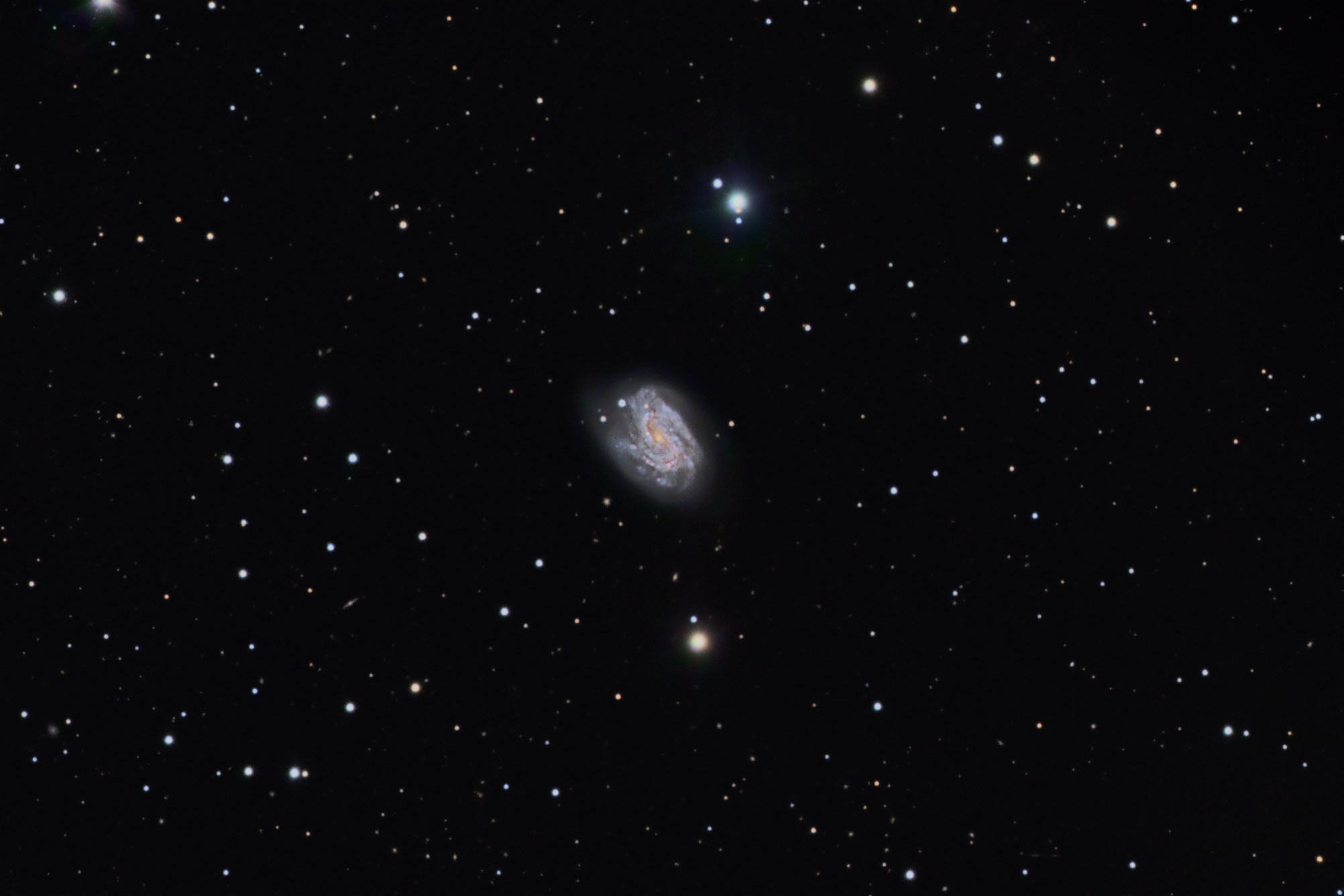| Description | Images |
Object name: NGC0157Designation(s): NGC0157, NGC 157 a spiral galaxy that's at a rather low declination for good imaging up here in the "far" north. Thus it isn't a very clear image. It will have to do for now. This galaxy is not part of a group. So that one unusual thing about it. Most galaxies are located on groups which are located in clusters which are located in superclusters etc. This one isn't one of those. Also, it appears to not have its quota of dark matter. Its rotation curve suddenly drops off. In a system with most of the mass at the center, such as our solar system, the objects farther from the core orbit more slowly than those nearer the core. Galaxies don't do this. Instead, they usually show a rather constant speed of the stars no matter where they are in the galaxy. Only in the very core does the expected speed seem to apply. Once out of the very center of the core the speed a star moves while orbit the galaxy is about constant. Since this defied both Newtonian and Einsteinian gravity it was a problem. Then it was discovered galaxies are embedded in a huge cloud of dark matter. Once this was taken into account the rotation curves of galaxies made sense. But this one turns more like Newtonian gravity would predict. Thus it has very little dark matter. Why? No one knows. Related Designation(s):2MASS J00344676-0823469, 2MASX J00344675-0823473, 2MIG 0070, 6dF J0034467-082347, 6dF J0034468-082347, AGC 400290, CGS 125, HIPASS J0034-08, IRAS 00322-0840, IRAS F00322-0840, ISOSS 004, ISOSS J00347-0823, LQAC 008-008 005, MCG -02-02-056, NGC 0157, NGC0157, NSA 127226, NVSS J003446-082329, PGC 002081, [RHM2006] SFGs 045, [SLK2004] 0079, |
